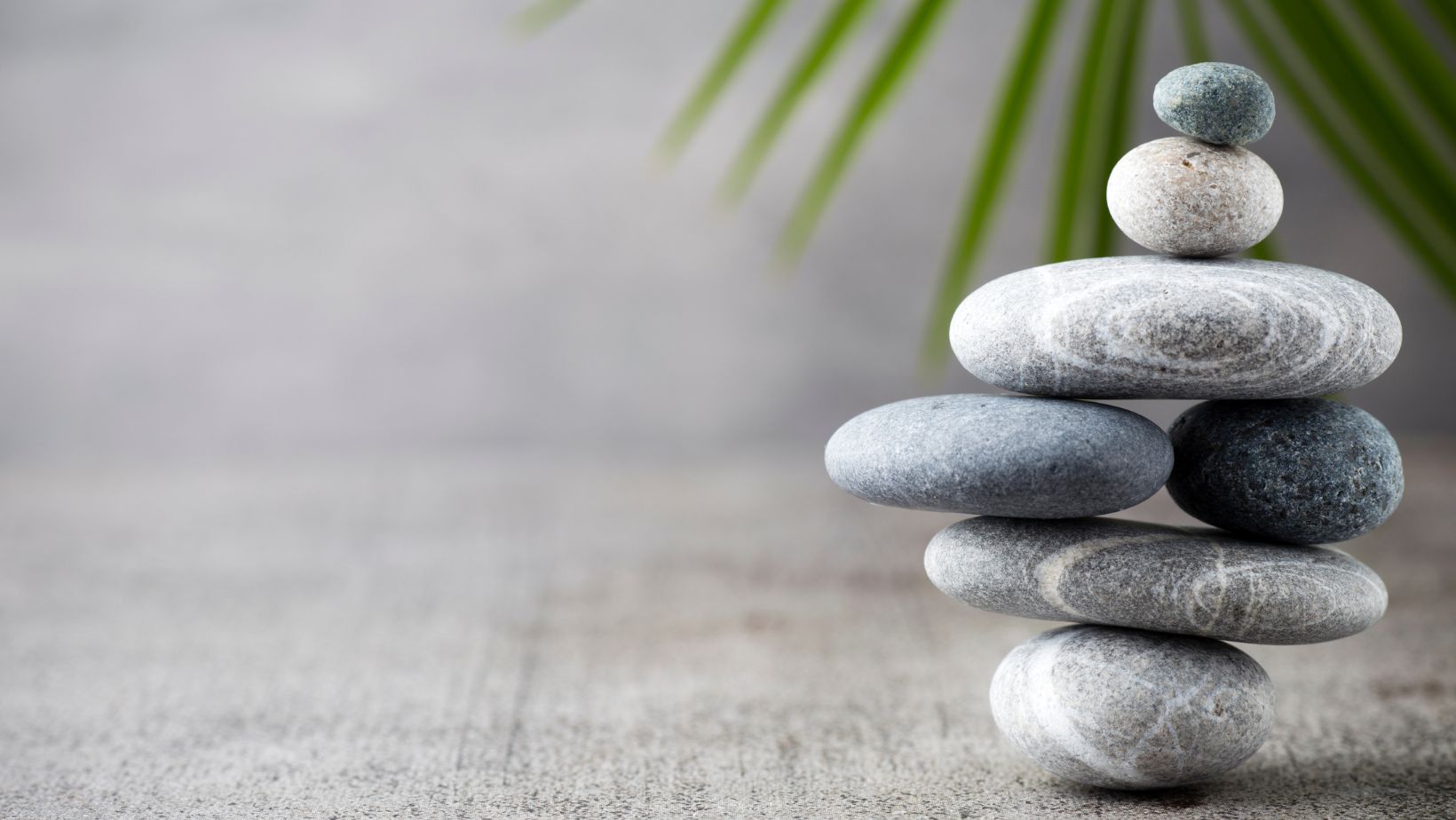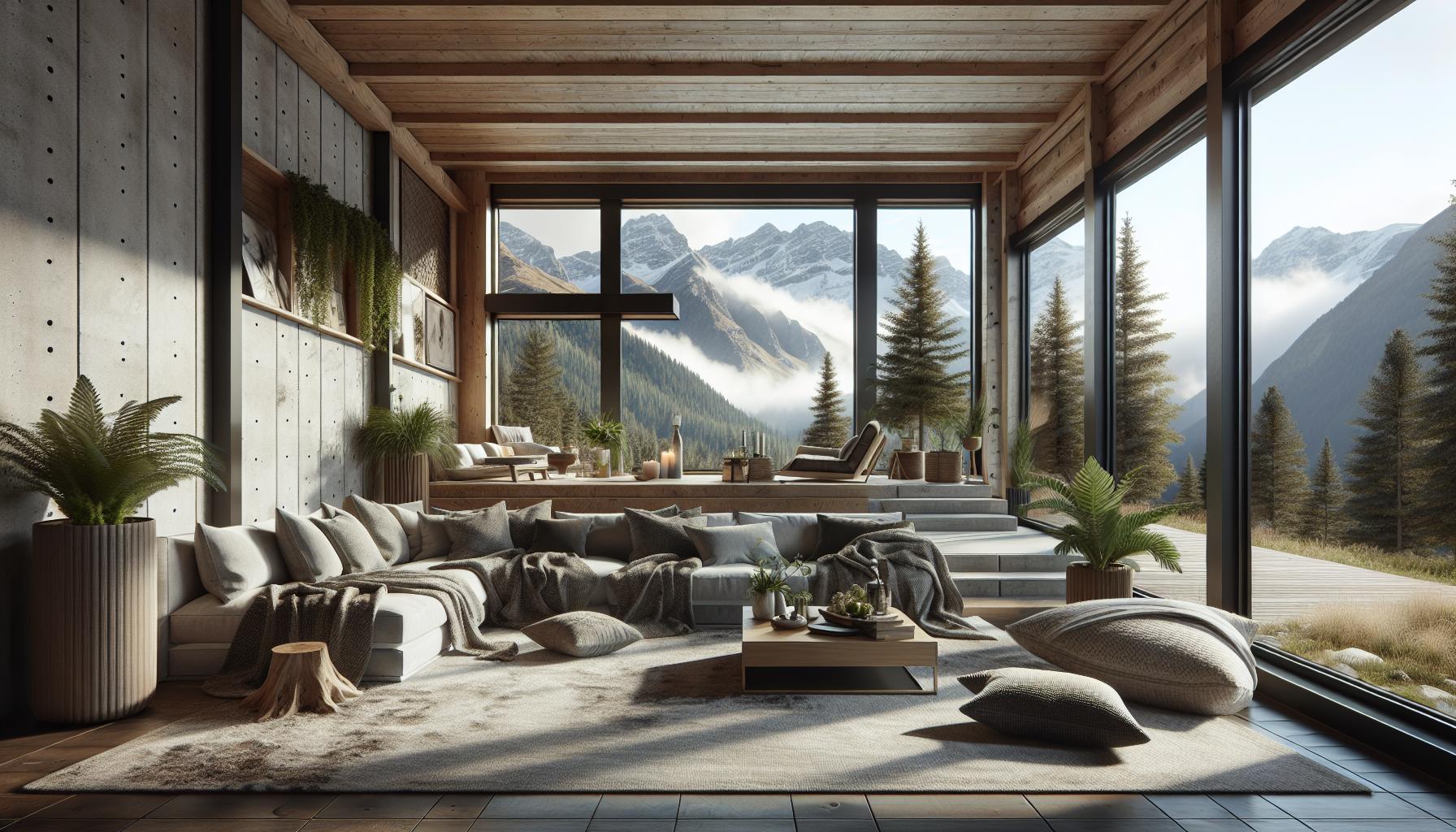”
Key Takeaways
- Sustainable Materials: Homeowners are increasingly opting for eco-friendly materials like bamboo, reclaimed wood, and recycled metals to reduce environmental impact and add unique finishes to their spaces.
- Multifunctional Spaces: 2023 trends highlight the design of versatile areas, such as home offices that can double as guest rooms, utilizing features like foldable furniture and smart storage solutions.
- Biophilic Design: Incorporating elements that connect interiors with nature, such as large windows and indoor plants, enhances well-being and promotes mental health.
- Warm Color Palettes: Earthy tones like terracotta and olive green create inviting and comfortable living environments that foster relaxation.
- Technology Integration: Smart home systems are being integrated into designs for enhanced convenience, with features like automated lighting and climate control offering efficiency without compromising style.
- Personalized Spaces: Home design now reflects individual stories and interests through unique artwork and custom furniture, making spaces truly one-of-a-kind.
Home design is constantly evolving, reflecting changes in lifestyle, technology, and personal preferences. As people spend more time in their living spaces, the demand for innovative and functional designs has surged. 2023 brings fresh trends that blend comfort with aesthetics, making homes not just places to live but also sanctuaries of style and well-being.
From sustainable materials to multifunctional spaces, current trends emphasize a connection with nature and a focus on mental health. Homeowners are seeking designs that promote relaxation and creativity, while also being practical. As these trends unfold, they offer exciting opportunities to transform ordinary spaces into extraordinary environments that resonate with individual tastes and modern living.
Current Home Design Trends
Home design trends in 2023 focus on several crucial elements that enhance both functionality and aesthetic appeal.
Sustainable Materials
Sustainable materials prioritize eco-friendliness. Homeowners increasingly choose bamboo, reclaimed wood, and recycled metals for their projects. These materials reduce environmental impact while providing unique textures and finishes.
Multifunctional Spaces
Multifunctional spaces maximize utility. Designers create rooms that adapt to various activities, such as home offices that double as guest rooms. Popular features include foldable furniture and smart storage solutions.
Biophilic Design
Biophilic design connects interiors with nature. Large windows, indoor plants, and natural light enter spaces, enhancing well-being. Homeowners prefer designs that incorporate organic elements, such as stone and wood.
Minimalism
Minimalism emphasizes simplicity and functionality. Clean lines and uncluttered spaces create a serene atmosphere. This trend encourages fewer decorative items, focusing instead on quality over quantity.
Warm Color Palettes
Warm color palettes create inviting environments. Earthy tones, such as terracotta, olive green, and soft beige, dominate spaces. These colors promote a sense of comfort and relaxation in homes.
Technology Integration
Technology integration enhances convenience and efficiency. Smart home systems control lighting, climate, and security through applications. Homeowners enjoy seamless connectivity and energy efficiency.
Personalized Spaces
Personalized spaces reflect individual stories. Homeowners incorporate their interests and travels into designs. Unique artwork, family heirlooms, and custom furniture create distinctive aesthetics.
Wellness-Focused Design
Wellness-focused design promotes health and well-being. Spaces that prioritize natural light, ventilation, and sound insulation contribute to improved mental health. Homeowners seek calming areas for meditation or yoga.
Vintage and Antique Accents
Vintage and antique accents add character to spaces. Homeowners mix old and new elements for a unique design. These touches foster a sense of history and personality in modern homes.
Outdoor Living Spaces
Outdoor living spaces extend functional areas outside. Patios, decks, and outdoor kitchens serve as spaces for relaxation and entertainment. This trend celebrates outdoor lifestyles and enhances connectivity with nature.
Sustainable Materials
Sustainable materials play a pivotal role in shaping modern home designs. Homeowners increasingly prioritize eco-friendliness and resource conservation, promoting the use of innovative building products.
Eco-Friendly Building Products
Eco-friendly building products include those made from renewable resources and sustainable practices. Examples include bamboo, cork, and recycled steel. Many architects and designers now specify materials that meet rigorous environmental standards, such as those certified by the Forest Stewardship Council (FSC) or the Sustainable Forestry Initiative (SFI). These products not only minimize environmental impact but also enhance indoor air quality by reducing volatile organic compounds (VOCs) found in traditional materials.
Recycled and Upcycled Designs
Recycled and upcycled designs incorporate previously used materials, reducing waste and conserving resources. Homeowners embrace reclaimed wood from old barns or pallets for flooring, furniture, and accents, adding character and history. Upcycled items, such as refurbished lighting fixtures or repurposed metal scraps, offer unique aesthetic value while promoting sustainability. Incorporating these elements demonstrates a commitment to environmental responsibility and creativity in home design.
Open Floor Plans
Open floor plans maximize space, allowing for seamless flow between living areas. This design trend reflects a preference for connectivity and versatility in home environments.
Benefits of Open Spaces
Open spaces promote social interaction, making it easier for families and guests to engage in activities together. They enhance natural light, creating a brighter atmosphere that improves mood and productivity. Flexibility in furniture arrangement allows homeowners to adapt the space for various functions, such as entertaining or relaxation. Additionally, fewer walls reduce construction costs and facilitate easier navigation throughout the home.
Popular Layouts
Several popular layouts highlight the effectiveness of open floor plans:
- Kitchen-Living Room Combinations: This layout integrates cooking and gathering areas, enabling efficient multitasking and interaction during meal preparations.
- Living-Dining Room Blends: Merging these spaces creates a unified area for dining and leisure, accommodating larger gatherings without feeling cramped.
- Multi-Functional Zones: Designating specific areas for various tasks, such as a home office corner within the living space, facilitates balance between work and leisure.
- Indoor-Outdoor Connections: Designs that incorporate large sliding doors or windows promote accessibility to outdoor spaces, enhancing enjoyment of nature and fresh air.
These layouts exemplify the versatility and appeal of open floor plans, meeting the needs of modern lifestyles.
Smart Home Technology
Smart home technology transforms modern living spaces by enhancing convenience, security, and energy efficiency. Homeowners increasingly seek integrated systems that seamlessly blend with their design aesthetics while providing intuitive functionality.
Integration with Design
Smart home devices integrate effortlessly with contemporary design trends, emphasizing sleek and minimalistic styles. Home automation systems, lighting controls, and smart thermostats allow homeowners to manage energy use without sacrificing style. Devices like hidden speakers and embedded appliances maintain clean lines and uncluttered appearances, supporting the overall aesthetic appeal of a home. Designers often choose smart devices that complement color schemes and materials, ensuring technological elements feel like cohesive components of the interior.
Latest Innovations
Innovations in smart home technology enhance both safety and convenience. Devices such as smart doorbells with video surveillance, automated blinds that adjust based on sunlight, and Wi-Fi-enabled appliances reflect current preferences for intuitive living. Homeowners can control these systems remotely via smartphone apps, increasing flexibility and ease of use. Advanced features like voice control and integration with virtual assistants, such as Amazon Alexa or Google Assistant, further push the boundaries of how technology interacts with daily life. Energy monitoring solutions promote sustainability by providing insights into usage patterns, allowing for informed adjustments that lead to reduced energy consumption.
| Innovation | Description |
|---|---|
| Smart Doorbells | Provides video surveillance and alerts for visitors. |
| Automated Blinds | Adjusts based on sunlight for privacy and efficiency. |
| Wi-Fi-enabled Appliances | Allows remote control and monitoring of appliances. |
| Voice Control Systems | Facilitates hands-free management of various devices. |
| Energy Monitoring | Offers insights into energy use and encourages sustainability. |
Color Palettes
Color palettes in home design for 2023 emphasize warmth, harmony, and individuality. Homeowners increasingly choose colors that evoke comfort while reflecting personality.
Trending Colors of the Year
Trending colors for 2023 feature muted, earthy tones that promote relaxation and well-being. Key selections include:
- Terracotta: This rich, warm hue adds a touch of rustic charm.
- Moss Green: Reflecting nature, this calming color creates a serene atmosphere.
- Soft Blue: This gentle tone inspires tranquility and complements various design styles.
- Warm Neutrals: Beige, taupe, and cream tones serve as versatile backdrops, enhancing space cohesion.
Color Combinations for 2023
Color combinations for 2023 focus on balancing vibrancy with subtlety, creating inviting spaces. Popular pairings include:
- Earthy Tones and Deep Blues: This combination adds depth while maintaining a grounded feel.
- Warm Neutrals and Dark Greens: Warm neutrals work harmoniously with dark greens, promoting a sense of nature indoors.
- Soft Pastels with Bold Accents: Utilizing soft pastels alongside bolder hues, like deep maroon or navy, brings visual interest and dynamic contrast.
- Monochromatic Schemes: Selecting various shades of the same color enhances depth and sophistication, creating a cohesive design approach.
Emphasizing these modern color trends fosters a welcoming environment while aligning with personal expression in home design.
Embracing Sustainable Materials And Innovative Designs
The current home design trends of 2023 reflect a profound shift towards creating spaces that are both functional and aesthetically pleasing. By embracing sustainable materials and innovative designs homeowners are crafting environments that prioritize comfort and well-being. The integration of smart technology not only enhances convenience but also aligns with modern lifestyles.
Color palettes play a crucial role in setting the mood of a home. With warm earthy tones and personalized accents homeowners can create inviting atmospheres that resonate with their individual stories. As these trends continue to evolve they offer exciting possibilities for transforming living spaces into true reflections of personal style and values.
“




